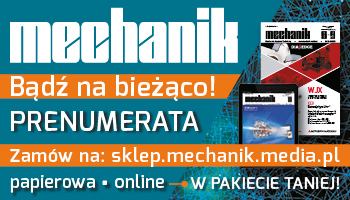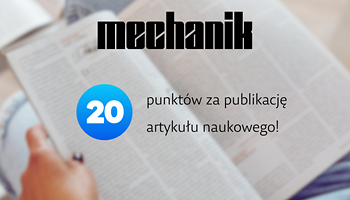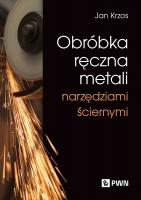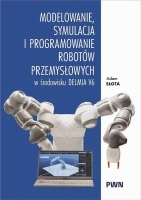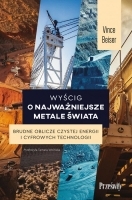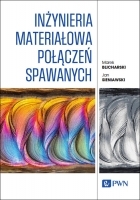Modelling and simulation of the machining process based on multiscale approach – a comprehensive review
Modelowanie i symulacja procesu obróbki na podstawie podejścia wieloskalowego – przegląd *
Mechanik nr 07/2025 - Obróbka skrawaniem
ABSTRACT: This paper reviews key principles of multiscale modeling and numerical simulations of fundamental physical phenomena in machining processes, including plastic deformation, chip formation, and interfacial friction. Representative applications of modeling for multiphase and composite materials, determination of constitutive equation constants, and simulation of nano- and micromachining processes using hybrid MD+FEM and SPH+FEM methods are discussed.
KEYWORDS: multiscale modeling, FEM, MD, SPH, machining simulation, micro/nanomachining
STRESZCZENIE: W artykule przedstawiono kluczowe zasady modelowania wieloskalowego oraz symulacji numerycznych zjawisk fizycznych zachodzących w procesach obróbki skrawaniem, takich jak odkształcenia plastyczne, powstawanie wiórów i tarcie międzyfazowe. Omówiono wybrane przykłady zastosowania modelowania do materiałów wielofazowych i kompozytowych, wyznaczania stałych w równaniach konstytutywnych materiału oraz symulacji procesów nano- i mikroobróbki przy użyciu metod hybrydowych MD+FEM i SPH+FEM.
SŁOWA KLUCZOWE: modelowanie wieloskalowe, symulacja obróbki, mikroobróbka, nanoobróbka
BIBLIOGRAFIA / BIBLIOGRAPHY:
[1] Lin, K., and Z. Wang. „Multiscale Mechanics and Molecular Dynamics Simulations of the Durability of Fiber-Reinforced Polymer Composites.” Communications Materials, vol. 4, 2023, p. 66, https://doi.org/10.1038/s43246-023-00391-2.
[2] Gohari, H., et al. „High-Performance Machining System: Process Optimization for a Cyber-Physical System – A Review.” Preprints.org, 2024, doi:10.20944/preprints202401.1951.v1.
[3] Yanagimoto, J., et al. „Simulation of Metal Forming. Visualization of Invisible Phenomena in the Digital Era.” CIRP Annals - Manufacturing Technology, vol. 71, 2022, pp. 599-622.
[4] Grzesik, W., et al. Analysis and Modelling of Surfaces Produced by Subtractive Machining. PWN, 2024.
[5] Grzesik. W. Advanced machining processes of metallic materials, Elsevier, 2017.
[6] Madej, Ł., and M. Sitko. „Computationally Efficient Cellular Automata-Based Full-Field Models of Static Recrystallization: A Perspective Review.” Steel Research International, vol. 1, 2022, doi:10.1002/srin.202200657.
[7] Shiaria, B., R. E. Miller, and D. D. Klug. „Multiscale Simulation of Material Removal Processes at the Nanoscale.” Journal of the Mechanics and Physics of Solids, vol. 55, 2007, pp. 2384–2405.
[8] Cheng, K., and D. Huo. Micro-Cutting. Fundamentals and Applications. Chichester, 2013.
[9] Melkote, S., et al. „A Review of Advances in Modeling of Conventional Machining Processes: From Merchant to the Present.” Journal of Manufacturing Science and Engineering, vol. 144, 2022, pp. 110801-11–110801-22.
[10] Ojal, N., et al. „A Realistic Full-Scale 3D Modeling of Turning Using Coupled Smoothed Particle Hydrodynamics and Finite Element Method for Predicting Cutting Forces.” Journal of Manufacturing and Materials Processing, vol. 6, no. 2, 2022, p. 33, doi:10.3390/jmmp6020033.
[11] Hardt, M., et al. „On the Application of the Particle Swarm Optimization to the Inverse Determination of Material Model Parameters for Cutting Simulations.” Modeling, vol. 2, 2021, pp. 129–148, doi:10.3390/modelling2010007.
[12] Jain, V. K. Micromanufacturing Processes. CRC Press, 2013.
[13] Xu, Y., et al. „Multiscale Assessment of Nanoscale Manufacturing Process on the Freeform Copper Surface.” Materials, vol. 13, 2020, p. 3115, doi:10.3390/ma13143135.
[14] Pratap, A., et al. „Understanding the Surface Generation Mechanism during Micro-Scratching of Ti-6Al-4V.” Journal of Manufacturing Processes, vol. 82, 2022, pp. 543–558, doi:10.1016/j.mapro.2022.08.014.
[15] Xu, Y., et al. „Multiscale Assessment of Nanoscale Manufacturing Process on the Freeform Copper Surface.” Materials, vol. 13, 2020, p. 3135, doi:10.3390/ma13143135.
[16] Eder, S. J., et al. „A Multiscale Simulation Approach to Grinding Ferrous Surfaces for Process Optimization.” International Journal of Mechanical Sciences, vol. 194, 2021, p. 106186.
[17] Teimouri, R. „Multiscale Modeling of a Chain Comprising Selective Laser Melting and Post-Machining Toward Nanoscale Surface Finish.” Materials, vol. 16, 2023, p. 7535, https://doi.org/10.3390/ma16247535.
[18] „Multiscale Modeling Techniques.” ETH Zurich, https://mm.ethz.ch/education/master-phd-studies/multiscale-modeling.html.
[19] Wiesener, F., et al. „Modeling of Heat Transfer in Tool Grinding for Multiscale Simulations.” Procedia CIRP, vol. 117, 2023, pp. 269–274, doi:10.1016/j.procir.2023.03.046.
[20] Zhang, N., et al. „Hybrid SPH–FEM Solver for Metal Cutting Simulations on the GPU Including Thermal Contact Modeling.” CIRP Journal of Manufacturing Science and Technology, vol. 41, 2023, pp. 311–327, doi:10.1016/j.cirpj.2022.12.012.
[21] Sauer, F., et al. „Multiscale Simulation Approach to Predict the Penetration Depth of Oil between Chip and Tool during Orthogonal Cutting of AISI 4140.” Procedia CIRP, vol. 117, 2023, pp. 426–431, doi:10.1016/j.procir.2023.03.072.
[22] Zhang, Y., et al. Multiscale Modeling of Additively Manufactured Metals. Elsevier, 2020.
[23] Grzesik, W. „Progress in Modelling and Simulation of the Machining Process – Part I: Multiscale Modelling.” Mechanik, no. 3, 2024, pp. 30–37, doi:10.17814/mechanik.2024.3.4.
[24] Grzesik, W. „Progress in Modelling and Simulation of the Machining Process – Part II: Mesh-Free Modelling and Simulation.” Mechanik, no. 5-6, 2024, pp. 6–15, doi:10.17814/mechanik.2024.5-6.9.
DOI: https://doi.org/10.17814/mechanik.2025.7.6
* Artykuł recenzowany





